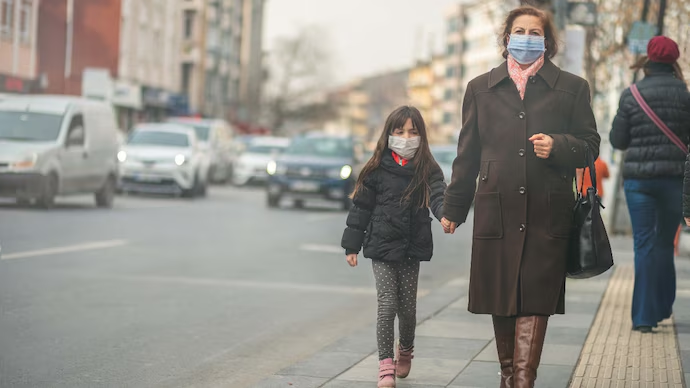The State of Global Air (SoGA) 2024 report, released on Wednesday, unveils alarming statistics on the impact of air pollution on human health, highlighting its status as the second leading cause of death globally.
Key Findings:
Global Death Toll- Air Pollution:
In 2021, air pollution was responsible for 8.1 million deaths worldwide, making it the second leading risk factor for death globally.
- Children Under 5: Over 700,000 children under the age of five died due to pollution-related causes.
- Geographic Impact: South Asia witnessed 260,600 deaths in children under five due to air pollution, making it the second leading cause of death after malnutrition in the region.
Regional Burden:
- India and China: India and China accounted for a significant portion of the global disease burden, with 2.1 million and 2.3 million deaths respectively, representing 54% of the global total.
- South Asia and Africa: Countries in South Asia, East, West, Central, and South Africa experienced the largest burden of disease linked to air pollution.
Ozone Pollution:
- Increase in Ozone-Related Deaths: Deaths due to ozone exposure have increased over time, from 93,000 in 2000 to 272,000 in 2021 in India.
- COPD and Ozone: Nearly 50% of all ozone-related Chronic Obstructive Pulmonary Disease (COPD) deaths in 2021 were in India, followed by China (125,600 deaths) and Bangladesh (15,000 deaths).
Progress and Challenges:
- Improvement in Child Mortality Rates: There has been a 53% drop in child mortality rates linked to air pollution since 2000 due to improvements in air quality and energy access.
- Ongoing Threats: Despite progress, the report emphasizes the urgent need for further action to prevent air pollution from continuing to threaten health, particularly in vulnerable populations.
Rising Ozone Exposure: The proportion of the population experiencing high ozone exposure is increasing in many regions, including India, Nigeria, Pakistan, and Brazil, with ambient ozone exposure increasing by more than 10% in the last decade.
Urgent Call for Action
The report by the Health Effects Institute (HEI), in partnership with UNICEF, underscores the critical need for intensified efforts to combat air pollution. The focus should be on reducing emissions, improving air quality, and implementing policies that protect vulnerable populations, especially children under five, who are disproportionately affected.
Conclusion
The SoGA 2024 report highlights both the progress made and the significant challenges that remain in addressing the global health crisis posed by air pollution. It serves as a call to action for governments, organizations, and individuals worldwide to continue efforts to mitigate this pervasive threat and safeguard public health, particularly for the youngest and most vulnerable populations.








